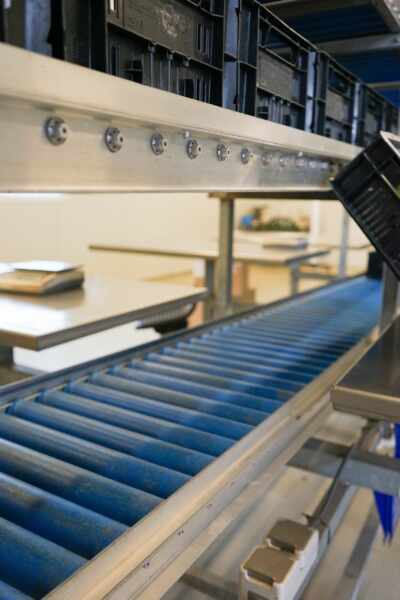In the bustling world of conveyor belt systems, maintaining cleanliness isn’t just about appearance—it’s essential for efficiency, safety, and longevity. Each type of conveyor belt, whether it’s made from synthetic materials or composed of robust steel, requires specific cleaning techniques to ensure it performs at its best and remains compliant with industry standards. As experts in the field, we understand that the right cleaning procedure can significantly extend the life of a conveyor belt and prevent costly downtime caused by material build-up or wear and tear.
At our company, we dedicate ourselves to helping you navigate the ins and outs of conveyor belt maintenance. From the food industry to heavy manufacturing, the principles of effective conveyor belt cleaning play a pivotal role in operational success. Our goal is to equip you with the knowledge and techniques to maintain your conveyor belts effectively, ensuring they continue to facilitate your operations smoothly and safely. Let’s explore the tailored cleaning strategies that not only meet industry standards but also adapt to the specific needs of different conveyor belt materials.
Identifying the Right Cleaning Methods for Each Conveyor Belt Type
Ensuring the longevity and efficiency of a conveyor belt starts with proper cleaning and maintenance. With each type of conveyor belt, there are specific cleaning methods that are most effective and least harmful to the material. For instance, rubber belts, commonly used in sorting and packaging processes, require gentle cleansing agents to avoid degrading the material. Conversely, metal belts can withstand stronger cleaners and higher pressure washing, suitable for removing tougher grime and debris typically found in mining or metalworking facilities.
Understanding these distinctions is crucial for maintaining conveyor belts in optimal condition. We always recommend consulting the manufacturer’s guidelines for maintenance and combining this with our industry insights to develop a tailored cleaning plan that suits the material and usage of the belt. By using the correct techniques, you not only extend the life of the conveyor belt but also ensure it operates at peak performance, thereby increasing your operational productivity.
Step-by-Step Guide to Cleaning Synthetic Conveyor Belts
Cleaning synthetic conveyor belts, such as those made from PVC or polyurethane, requires careful attention to ensure that the integrity of the belt material is preserved. We suggest a systematic approach to this process. First, remove any large debris by gently scraping the belt, taking care not to cut or gouge the material. Next, use a mild detergent mixed with warm water to clean the surface; this solution is effective yet gentle enough to prevent damage to the synthetic material.
After applying the soapy solution, it is important to thoroughly rinse the conveyor belt with clean water. This step removes any residual cleaner that could potentially degrade the material over time. Finally, dry the belt using a non-abrasive cloth or let it air-dry completely before restarting the conveyor system. By following these steps, we ensure that our synthetic conveyor belts are not only clean but also maintained in a condition that maximizes their lifespan and effectiveness in your operations.
Maintaining Steel Conveyor Belts: Best Practices
Caring for steel conveyor belts requires specific considerations to maintain their durability and operational functionality. Unlike other materials, steel belts can handle extreme conditions and heavy loads, but they still need regular attention to prevent rust and ensure smooth operations. Regular inspections are key. We recommend weekly checks for any signs of wear or damage, such as cracks, rust, or misalignment, which can affect performance. Lubrication also plays a pivotal role in their upkeep. Using the right type of grease or oil can prevent the metal parts from grinding against each other, which not only extends the belt’s life but also enhances efficiency by reducing energy consumption.
Additionally, keeping the belt clean is fundamental. Any built-up debris can be abrasive and may lead to premature wear. Effective cleaning involves removing any accumulated materials that could potentially damage the belt’s surface, paying particular attention to the joins and undercarriage where particles often collect. For us, ensuring these belts are meticulously maintained means less downtime and more productive operation, aligning perfectly with our commitment to high-quality, efficient outcomes for our processes.
Ensuring Compliance and Safety During Conveyor Belt Cleaning
Compliance with safety standards and regulations during conveyor belt cleaning is not just a regulatory requirement; it’s a critical aspect of maintaining workplace safety and operational integrity. We are vigilant in training our team on the latest safety protocols and in using only approved cleaning agents and methods that do not compromise the integrity of the conveyor belts. This approach not only protects our personnel but also ensures that all handling and cleaning procedures meet the rigorous standards expected in our industry.
To this end, thorough risk assessments are conducted before any cleaning process begins, identifying potential hazards and determining the safest methods for executing the task. It’s also essential to use the right personal protective equipment (PPE) for the types of chemicals or cleaning methods used. By fostering a culture of safety and compliance, we maintain an environment where both our people and our products thrive.
As we navigate the complexities of maintaining high-performance conveyor systems, we understand the importance of reliability, efficiency, and safety in every aspect of our operations. At Change Parts Pty Ltd, we are committed to providing solutions that not only meet but exceed the expectations of our clients. Whether you’re looking to install new conveyor belts, require maintenance on an existing setup, or need expert advice on the best conveyor solutions, we are ready to help. Reach out to us today and let’s enhance the productivity and safety of your operations together.




